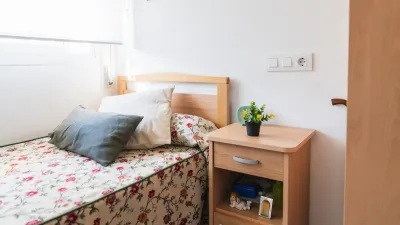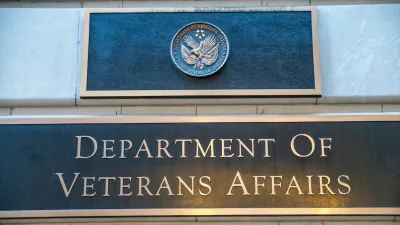The safety and stability offered by Safe Parking sites have helped 40 percent of unhoused San Diego residents who accessed these programs get into permanent housing.

San Diego’s Safe Parking Program made a significant dent in the city’s homelessness crisis, with 40 percent of program participants later transitioning into housing.
The program provides safe, secure lots where people living in their cars can park. These sites provide restrooms and other facilities and offer services to connect residents with housing and other assistance services.
As Brian Perry explains in Maui Now, “Many participants preferred safe parking over traditional shelters, citing increased safety, stability and autonomy.” Across the Pacific in Maui County, Hawaii, local leaders are pointing to the study as evidence that Safe Parking is a “best practice” for responding to the homelessness crisis and offering people services such as “ case management, employment support, housing assistance and basic amenities like restrooms and showers.”
According to the San Diego report, Safe Parking programs can provide the stability and safety that people need to seek and access permanent housing. “Researchers behind the San Diego study recommend expanding safe parking programs to operate 24/7, increasing the number of case managers and providing ongoing staff training. They also advocate for federal recognition and funding of safe parking programs as an official homelessness intervention.” Researchers point out that safe parking programs work best in conjunction with a successful social support system.
FULL STORY: ‘Safe parking’: A 2024 study reports favorable outcomes in curbing homelessness

Trump Administration Could Effectively End Housing Voucher Program
Federal officials are eyeing major cuts to the Section 8 program that helps millions of low-income households pay rent.

Planetizen Federal Action Tracker
A weekly monitor of how Trump’s orders and actions are impacting planners and planning in America.

Ken Jennings Launches Transit Web Series
The Jeopardy champ wants you to ride public transit.

Rebuilding Smarter: How LA County Is Guiding Fire-Ravaged Communities Toward Resilience
Los Angeles County is leading a coordinated effort to help fire-impacted communities rebuild with resilience by providing recovery resources, promoting fire-wise design, and aligning reconstruction with broader sustainability and climate goals.

When Borders Blur: Regional Collaboration in Action
As regional challenges outgrow city boundaries, “When Borders Blur” explores how cross-jurisdictional collaboration can drive smarter, more resilient urban planning, sharing real-world lessons from thriving partnerships across North America.

Philadelphia Is Expanding its Network of Roundabouts
Roundabouts are widely shown to decrease traffic speed, reduce congestion, and improve efficiency.
Urban Design for Planners 1: Software Tools
This six-course series explores essential urban design concepts using open source software and equips planners with the tools they need to participate fully in the urban design process.
Planning for Universal Design
Learn the tools for implementing Universal Design in planning regulations.
Ada County Highway District
Clanton & Associates, Inc.
Jessamine County Fiscal Court
Institute for Housing and Urban Development Studies (IHS)
City of Grandview
Harvard GSD Executive Education
Toledo-Lucas County Plan Commissions
Salt Lake City
NYU Wagner Graduate School of Public Service





























